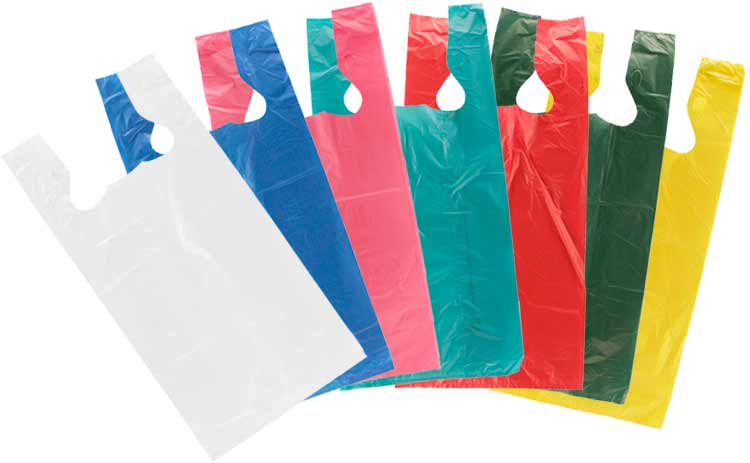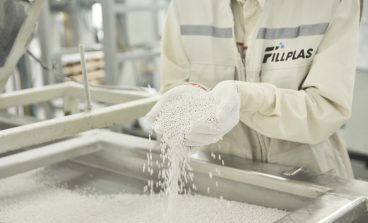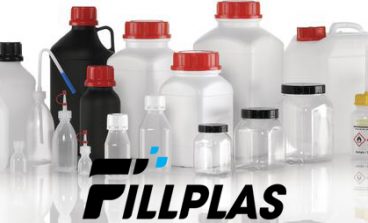
A plastic bag, polybag, or pouch is a type of container made of thin, flexible, plastic film, nonwoven fabric, or plastic textiles. Plastic bags are used for containing and transporting goods such as foods, produce, powders, ice, magazines, chemicals, and waste. It is a common form of packaging.
Plastic bags come in different types, each offering unique benefits and features. Each is also suitable for a particular use.
There are 5 chemistry-based types of plastic bags available in the market today.
High-Density Polyethylene (HDPE) resin for plastic bags
High-Density Polyethylene is one of the most common types of plastic bags. HDPE is used in the manufacture of papers for use in shopping outlets. The chemical composition of the polymer that forms HDPE features a long chain of straight molecules whose structure is linear from the beginning to the end. This polymer features minimal branching. This chemical structure results in highly dense plastic bags that are sturdy, light in weight and relatively opaque.
The preference for plastic bags made of HDPE lies in their ability to hold a lot of items or weight without breaking. The bag is also extremely resistant to chemicals, water, and even heat. It can conceal the content carried because of its opaque nature. Further, it is safe for packaging or transporting food.
This is the material used in the manufacture of garbage bags, laundry bags, and utility bags, among others. It is also used for manufacturing paper used in handling, packaging or serving food or materials that require a CO2 or oxygen barrier.
Low-Density Polyethylene (LDPE) resin for plastic bags
These types of plastic bags are commonly used in the manufacture of utility bags and plastics for use in food packaging. The polymer is made of short and branched chains that are of low density and widely spread. This results in a plastic film that is light in weight and of moderately low tensile strength. The film or resulting bag is not stretchable like the HDPE.
The plastic comes with a low melting point, making it ideal for heat sealing applications. The light polymer means that the material is easy to see through. It is therefore quite easy to identify the content carried in the paper.
This is the material of choice for restaurants and food joints looking to package their foods. Dry cleaners, butcheries, and suppliers of consumable produce commonly use this type of paper.
Linear Low-Density Polyethylene (LLDPE) resin for plastic bags
This is a common type of plastic bag material used in the manufacture of plastic bags for use in newspaper bags, garbage bags, and food bags, among others. The polymer used features non-branching chains but the tensile strength is low compared to that of HDPE.
This means that when the paper is used for the manufacture of shopping bags, it must be made thicker or heavier.
The gauge and clarity of LLDPE are slightly lower compared to high-density polyethylene plastic but the strength is maintained. As a result, they are cost-effective and thus preferred compared to low-density polyethylene plastics. This plastic bag is common with refrigerator storage and laundry stores.
Medium Density Polyethylene (MDPE) resin for plastic bags
This is the middle ground between high density and low-density polyethylene. Though it is not as opaque as high density, the film is not as clear as low-density polyethylene. The resulting film is also not dense enough to accommodate bulk storage.
Luckily, it is very tolerant of chemical encounters. It comes with low tensile properties and easily stretches. It is therefore used in garbage bags and packaging films.
Polypropylene (PP) resin for plastic bags
Polypropylene is one of the most popular types of plastic bags. The material has extremely impressive chemical resistance properties. It is also very strong and can withstand heat because of a high melting point. It is, however, less opaque and will reveal the content of your bag. The longer shelf life, being non-breathable and food safe make the plastic ideal for retail operations.
It will be used in the packaging and storage of ketchup, candies, syrups, and medicines, among other liquid sensitive items. It can comfortably use for packaging hot supplies without damage.
Fillplas uses these types above to make filler masterbatch materials. Please visit our website to have more information.



